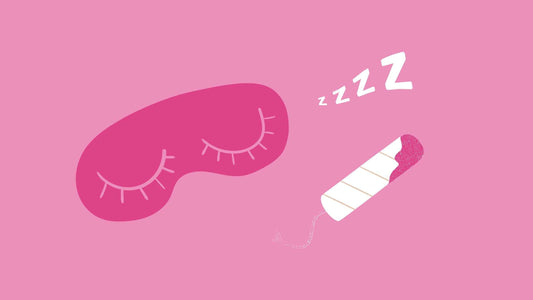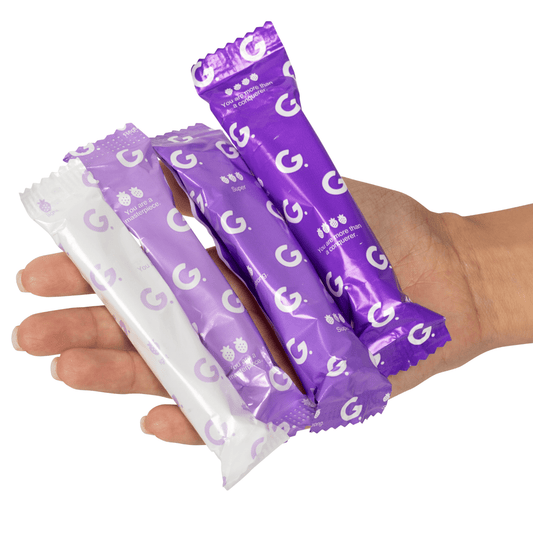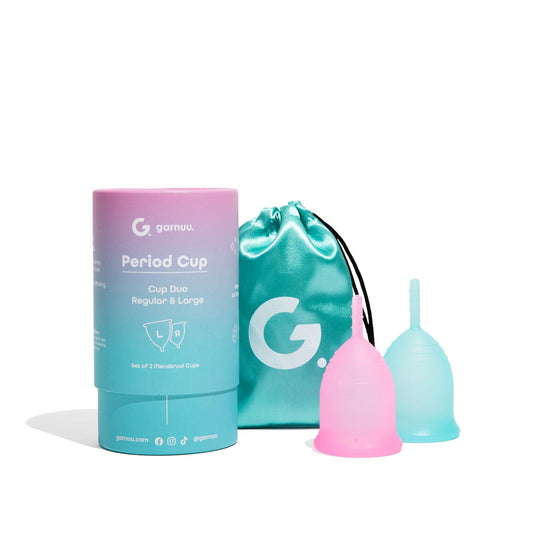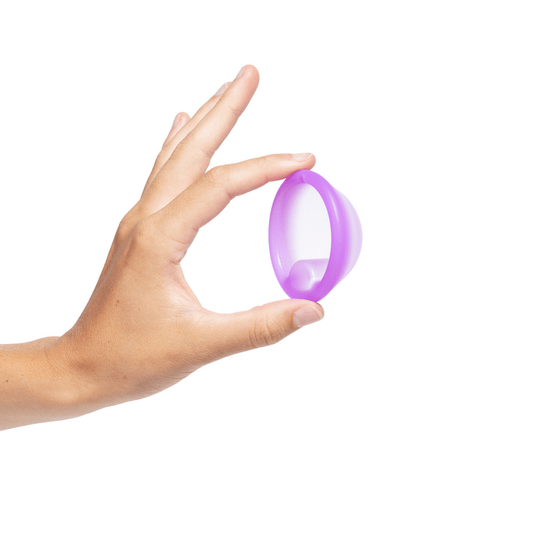
Menstrual Cycle Phases: The Hormones, The Purpose, The Phases
Share
Do you ever feel like a different person practically every week of the month? That's because you are! Our bodies are so uniquely different from men. Men's bodies work on a 24-hour clock, but women's work on a monthly cyclical clock. You know how your mans schedule and body is like clockwork every day, yet yours is a different animal every day? Yup, that's your menstrual cycle.
Did you know that there are four phases in the menstrual cycle? And each phase is associated with different hormones? In this blog post, we will discuss the menstrual cycle in detail. We will explore how it is calculated and what the purpose of each phase is. Plus, we will discuss the hormones involved in each phase!
What is the menstrual cycle?
- PHASE 1: The Period: When you get your period (which is day 1 of your cycle) your body is shedding the lining of your uterus that would prepare itself for a potential baby.
- Phase 2: Follicular: Then your body enters the follicular phase where estrogen climbs and begins to reline your uterus.
- Phase 3: Ovulation: Generally, at the midpoint of your cycle, your body releases an egg that could be fertilized during ovulation.
- Phase 4: Luteal: After you ovulate, you enter the luteal phase that if the egg was fertilized, your uterus would be preparing itself for a safe place for the baby. Pregnancy begins once a fertilized egg attaches to the womb. If the egg is not fertilized, it breaks apart and you begin your period again.
Alright, now that is a BRIEF explanation on each phase, but let's get into it more!
How is the menstrual cycle calculated?
The menstrual cycle is calculated by counting from the first day of your last period to the first day of your next period. The average menstrual cycle is 28 days long-ish, but it can range from 21 to 35 days. The length of your cycle may vary from month to month, but generally it should be the same length each month.

How do you know when you enter each phase of the menstrual cycle?
Period Tracking or Fertility App
Many period tracking apps will give you insight as to where you are in your cycle if you have continuously entered in your period dates long enough. Some of them may be off a little bit, but for the most part they show you which menstrual phase you're in!
Cervical mucus
Usually your cervical canal secrete mucus. Generally speaking mucus is different over time. The mucous changes as it grows to resemble consistency and structure, and allows the spermatogenesis to travel to your eggs. When your fertility is at its highest, the mucus will be clear, stretchy, and lots of it. Many women use cervical mucus to track where they're at in their cycle. You can test cervical mucus by checking your underwear after going to the bathroom or checking the consistency after you pee.
Phases of the menstrual cycle
Now that we know what the phases roughly are and how to know when you're in each phase biologically, let's get into what each menstrual phase means and how you will feel!

Menstruation (days 1-7)

This is the phase when you're actually on your period. The first day of your period is day one of your cycle. For most people, this will last anywhere from two to seven days. During this time, your body is shedding the lining of the uterus, which is called the endometrium. This is the lining that would've made a comfy place for your baby if you had gotten pregnant during the previous ovulation. This shedding is what makes up your period blood.
Most women have some period symptoms such as cramps, headaches, bloating, etc. during this time because your female hormones (estrogen and progesterone) are at their lowest. Every woman responds differently to the drop in hormones.
For more information on what are period cramps and how to stop them, see our Guide to Period Cramps.
Follicular phase (days 7-14)

This follicular phase in your menstrual cycle usually occurs on day 7 to 14. This is when your body starts to gear up for ovulation. The pituitary gland releases a hormone called follicle-stimulating hormone (FSH). FSH signals the ovaries to release an immature egg, which begins to mature in one of the two ovaries.
At the same time, another hormone, estrogen, also begins to rise. When you have more estrogen, the world is better again.
NOTE: some women's bodies don't respond to high levels of estrogen well, usually these women experience pain during ovulation. If you experience this consider consulting a women's hormone and fertility specialist to get you feeling great during ovulation!
With more estrogen, you have more energy. You're also going to also want to increase your workout intensity after your period ends. Your body will also need foods rich in vitamin B12 and iron to replenish you after your period.
To learn more about the follicular phase read our Follicular Phase: Everything you need to know Guide!
Ovulation phase (day 12-16)

The release of the mature egg occurs around day 14 (halfway through your cycle) due to an increase of LHA and FSH hormones during the previous day. Technically ovulation is induced between 10 and 12 hours after the peaking of the LHA hormone. Eggs are then released into the fallopian tube and fertilization can occur. This would be the time for a woman to conceive.
You can read more about how ovulation works in our Ovulation Guide.
Luteal phase (Days 14-28)

After you ovulate, you enter the luteal phase of your cycle. If you had a fertilized egg during ovulation, your uterus would be preparing a safe place for the baby. Early pregnancy would begin once the fertilized egg attached itself to the womb. If the egg was not fertilized, it then breaks apart and your body would prepare for its next period.
What happens during the luteal phase? Where do we get luteal from?
The corpus-luteum generates progesterone. If fertilization occurs, the corpus-luteum produces progesterone that prevents the endometrial lining from leaking. If there has been no fertilization, the corpora of the lutea disintegrates and the progesterone levels decrease and signal a shedding of the linings of the endometria.
Corpus Luteum: It's located inside your ovaries and its job is to make your uterus a healthy place for a fetus to grow. It releases a hormone called progesterone that prepares your uterus for pregnancy. Once it's no longer needed to make progesterone, your corpus-luteum goes away.
If you did not conceive, you may experience bloating, lower energy levels, and cravings during the luteal phase due to progesterone levels dropping.
Your body thinks you might be pregnant so it's storing more fuel for the baby and causing you to crave more carbs. Foods that are high in vitamin A can help you during this phase. You also are going be hungrier, your body needs between 200-500 more calories during the luteal phase than other phases of the month.
This is thanks to a combination of estrogen and progesterone making your body more efficient at using fat for fuel.
So, in the end, you may eat more due to your hormone levels, but it all balances itself out with the extra calories.
You can read more about the benefits and superpowers you get in the luteal phase in our other blog post, The Luteal Phase of Your Menstrual Cycle!
Menstrual cycle with hormones

How do hormones affect menstrual cycle?
The menstrual cycle is controlled by hormones. The main hormone involved in the menstrual cycle is estrogen. Estrogen levels fluctuate throughout the menstrual cycle, and this fluctuation affects many of the changes that occur during the cycle, such as ovulation and menstruation.
Other hormones that are involved in the menstrual cycle are LH and FSH. LH stands for luteinizing hormone and FSH stands for follicle stimulating hormone. LH is responsible for the ovulation process, while FSH helps to mature the eggs. Both of these hormones are important in order for the menstrual cycle to occur properly.
What are the hormones like during menstruation?
In the early stage, the menstruation hormone FSH is released and this hormone increases with the duration of the follicle. As the name suggests, it promotes growth in small follicles in the ovary.
What hormones are highest during your period?
LH and progesterone increases during this luteal stage but then dramatically drop when you start your period. This where a lot of period symptoms come from. After you're done bleeding, estrogen and progesterone begin to rise again giving you more energy.
Understanding how menstruation works can help you understand how your own cycle works
Menstruation cycles are a method in which the body prepares you for pregnancy every month. Understanding how the pregnancy process works will help either conceiving, preventing a pregnancy, or help you feel not psycho!
What questions do you have about the menstrual cycle? Send your messages to us on Instagram @garnuu and give us a follow! And be sure to check out our other blog posts on hormones and women's health.
If you found this post helpful, share it with your friends!
We love you, thanks for reading :)
-Garnuu Team
DISCLAIMER: This content was written for informational purposes to educate women only. It is not medical advice.








